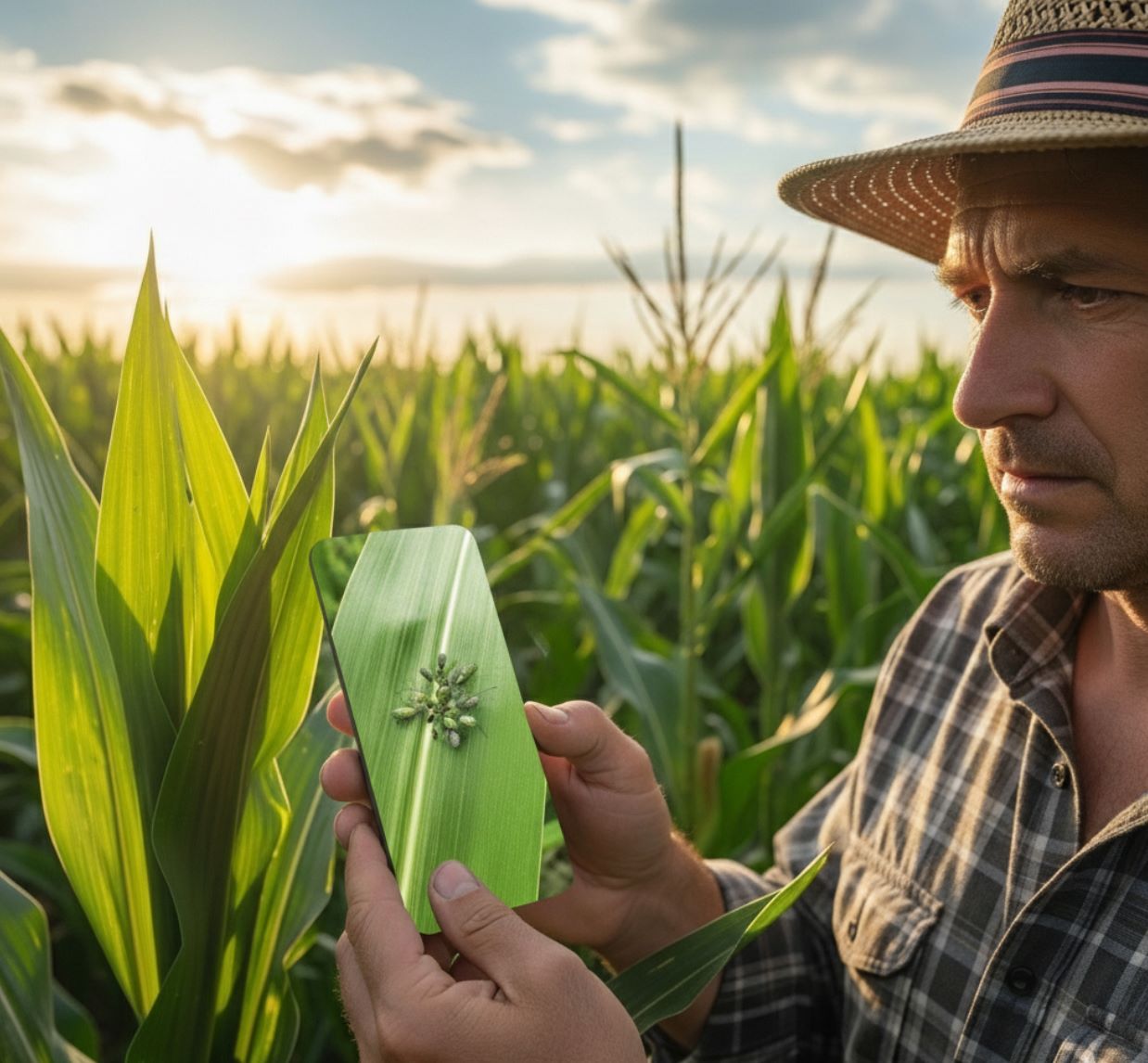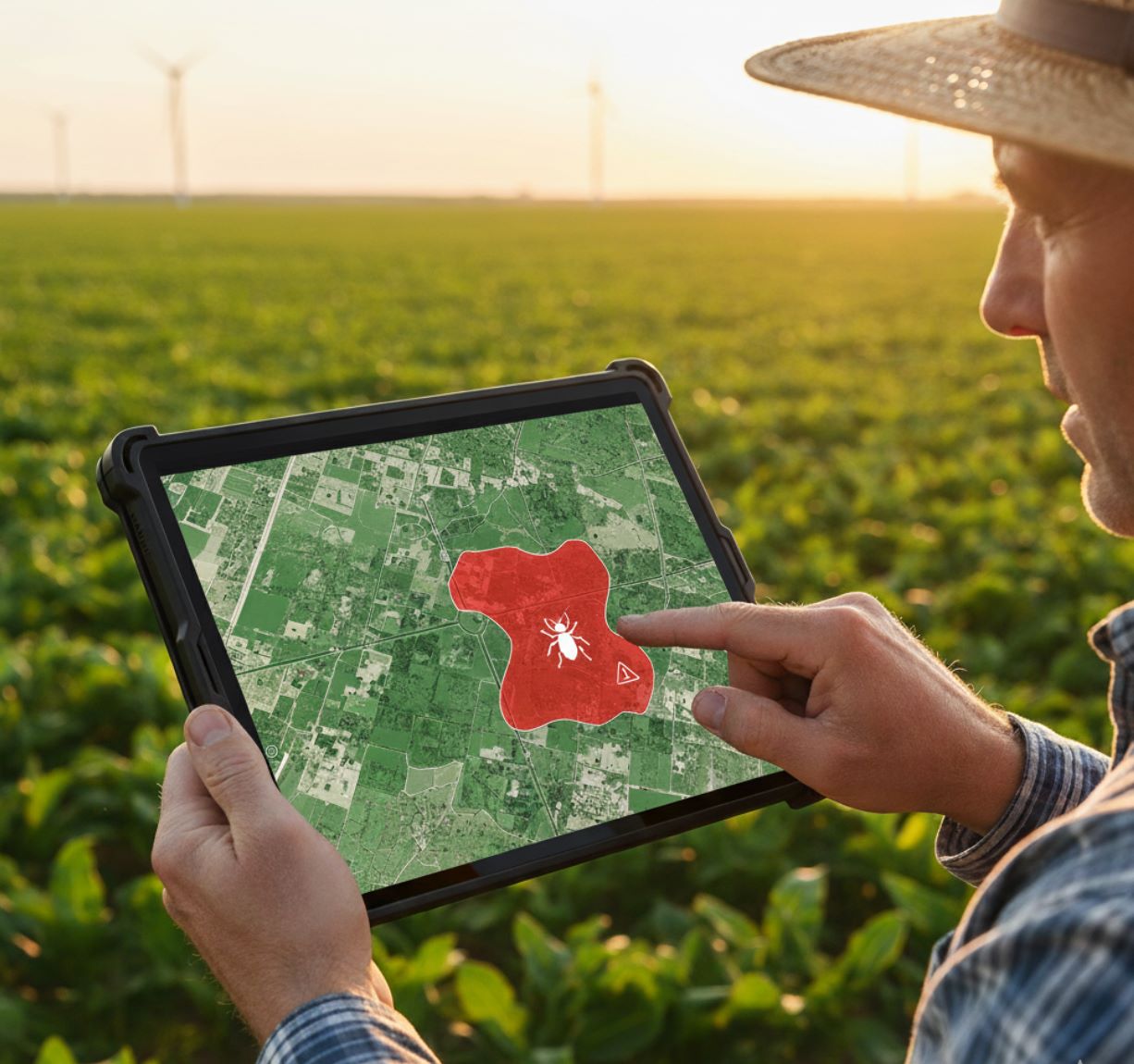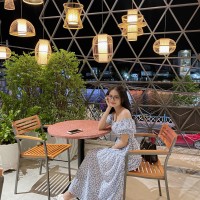How to predict plant pests and diseases with AI
Early detection of plant pests and diseases is essential for protecting crops and improving agricultural productivity. Today, artificial intelligence (AI) is transforming this process by predicting risks more accurately through image analysis, environmental sensors, and climate data. By identifying pest development patterns and spotting early signs of plant stress on leaves, stems, or soil, AI enables farmers to take timely preventive action, reduce pesticide costs, and move toward more sustainable and efficient farming.
AI (artificial intelligence) is revolutionizing agriculture by giving farmers advanced tools to spot and anticipate crop threats. Plant pests and diseases cause devastating losses – up to 15–40% of global crop yields – so early warning is vital.
Modern AI systems (machine learning and deep neural networks) can analyze huge datasets including images, weather patterns, and sensor readings to detect subtle signs of disease or forecast outbreaks. International experts note that AI excels at "monitoring dynamic pest behavior" and using real-time data to focus interventions where they matter most.
Smart farming now uses AI to detect and predict crop problems, helping farmers apply the right fix at the right time with unprecedented precision.
— Agricultural AI Research Consortium
Image-Based Pest and Disease Detection
A Kenyan farmer uses an AI-powered smartphone app (PlantVillage) to identify pests on a maize leaf. AI-driven image recognition lets anyone diagnose plant problems from a simple photo, democratizing access to expert agricultural knowledge.
PlantVillage App
Free smartphone diagnosis tool trained on thousands of crop images.
- Instant pest identification
- Voice-assisted guidance
- Treatment recommendations
Neural Networks
Convolutional neural networks power visual recognition systems.
- Pattern recognition
- Multi-crop compatibility
- Continuous learning
For example, the free PlantVillage app was trained on thousands of images of healthy and infected crops, enabling it to recognize common pests like the fall armyworm on maize. The farmer simply points a phone camera at a damaged leaf, and the app identifies the culprit via voice assistant and even suggests targeted control measures.
By automating visual diagnosis, these tools help small-scale farmers "end the guesswork" and treat only the real problems, reducing unnecessary pesticide applications and costs.

Sensor Networks and Predictive Analytics
A greenhouse in Kenya equipped with AI sensors (FarmShield) to monitor temperature, humidity and soil moisture. Beyond images, AI uses real-time sensor data to predict pest risk with remarkable accuracy. Farms and greenhouses are fitted with IoT sensors measuring temperature, humidity, CO₂, soil moisture, and other critical environmental factors.
Climate Monitoring
Soil Analysis
Remote Sensing
Specialized systems like FarmShield continuously log these conditions and run them through machine-learning models. In Kenya, for instance, a farmer uses FarmShield to monitor greenhouse climate; the AI recommends exactly when to water cucumbers to prevent stress and disease.
In India's sugarcane fields, for example, an AI platform combines local weather readings and imagery to send daily alerts – e.g. "Water more. Spray fertilizer. Scout for pests." – with satellite maps pinpointing exactly where actions are needed.
These predictive analytics systems learn patterns from time-series data so that when conditions favor a pest outbreak (high humidity, warm nights, etc.), farmers receive early warnings with sufficient time to take preventive action.

Key AI Data Sources and Methods
Weather and Climate Data
Machine learning models use temperature, humidity, rainfall and wind history to forecast pest outbreaks with exceptional precision.
One study predicted cotton pests (jassids and thrips) from weather variables with very high accuracy (AUC ~0.985). Explainable-AI analysis revealed that humidity and seasonal timing are the strongest predictors.
Soil and Growth Sensors
Continuous readings including soil moisture, leaf wetness, and CO₂ levels help AI detect conditions ripe for disease development.
A 2023 deep-learning model predicted risk scores for strawberry, pepper and tomato diseases solely from greenhouse environment data, reaching an average 0.92 AUROC for reliable risk threshold detection.
Remote Sensing Technology
High-resolution satellite and drone images allow AI to spot stressed plants before human eyes can detect problems.
- Satellite maps show vegetation stress indicators
- Agripilot.ai enables targeted field interventions
- Drone cameras scan orchards and plantations
- AI algorithms analyze aerial photos for disease detection
Historical Outbreak Records
Past data on pest occurrences, crop yields and interventions are used to train and validate predictive models for continuous improvement.
- Previous season pest occurrence patterns
- Neighboring farm data sharing via platforms
- Intervention effectiveness tracking
- Yield correlation analysis
By learning from historical data and shared platform information, AI systems improve their warning accuracy over time, creating increasingly reliable predictions.
By taking the guesswork out of timing pest control, AI-driven insights help reduce unnecessary spraying while boosting yields and promoting sustainable farming practices.
Real-World Examples and Tools
Farmers worldwide are already using AI solutions to fight pests and disease with remarkable success. In Africa, smallholders point smartphones at crop leaves and trust the AI diagnosis, while commercial operations deploy sophisticated sensor networks.
Mobile Diagnosis
In Machakos, Kenya, a maize farmer scanned his plant with PlantVillage and the app instantly flagged fall armyworm on the leaf, providing immediate treatment guidance.
Satellite Integration
The Virtual Agronomist project uses continent-wide soil and satellite data to advise on fertilization and pest management, trained on massive datasets.
Precision Targeting
Agripilot.ai (Microsoft-backed) supplies farm-specific recommendations like "Scout for pests in the northwest corner of the field" based on sensor and satellite data.
Smart Trap Technology
Automated Monitoring
Trapview and similar systems use onboard cameras plus ML algorithms.
- Real-time pest counting
- Species identification
- Outbreak forecasting
Early Warning
Intelligent traps detect rising pest numbers before infestations explode.
- Pheromone-based attraction
- Automated data collection
- Targeted intervention alerts
Even commercial traps now use AI: automated pheromone traps like Trapview capture insects and use onboard cameras plus ML to count and identify pest species. These intelligent traps can forecast outbreaks by detecting rising pest numbers in real time, allowing targeted intervention before infestations explode.
Most AI applications in parts of Africa have been focused on agriculture and food security, extending the reach of scarce agronomists and extension services.
— Industry Agricultural Technology Reports

By turning data into actionable advice – whether through apps, smart traps, or sensor networks – AI is helping farmers make "just the right decision at the right time" for effective pest control.
Challenges and Future Directions
Despite its promise, AI-based pest prediction also faces significant hurdles that must be addressed for widespread adoption. High-quality local data is essential: as the FAO notes, farmers need access to good sensor networks, connectivity and training for these tools to work effectively.
Implementation Barriers
- Limited smartphone access
- Patchy internet connectivity
- Lack of historical records
- Missing local context
Emerging Advances
- Improved deep-learning models
- Explainable-AI techniques
- Global agricultural AI models
- Enhanced training programs
In many regions, limited smartphone access, patchy internet and lack of historical records remain significant barriers. Moreover, experts caution that AI models can miss crucial local context – for example, an African researcher warns that most AI training sets exclude indigenous farming knowledge, so purely AI-driven advice might overlook well-tested local practices.
Emerging Technologies and Innovations
Advanced AI Models
Global Integration
Looking ahead, ongoing advances will continue to improve pest prediction capabilities. New deep-learning models and explainable-AI techniques will make forecasts more accurate and transparent, building farmer trust and understanding.
The FAO is even working on large agricultural AI models (like GPTs for farming) that will integrate global data to advise on local issues in real time. Meanwhile, the international plant-protection community is training personnel to use AI and drones for surveillance of deadly diseases such as banana Fusarium.

Conclusion: The Future of Smart Agriculture
In summary, predicting plant pests and diseases with AI involves combining multiple cutting-edge technologies: computer vision to identify symptoms, IoT sensors to track growing conditions, and machine learning on historical and environmental data to forecast outbreaks with unprecedented accuracy.
Crop Protection
Reduce crop losses through early detection and prevention.
- 15-40% loss prevention
- Targeted interventions
Sustainability
Lower pesticide use through precision application.
- Reduced chemical inputs
- Environmental protection
Resilience
Make farming more resilient to climate challenges.
- Adaptive management
- Risk mitigation
These methods together give farmers powerful early-warning and diagnosis tools that transform traditional agriculture. By integrating AI into farming operations, growers can reduce crop losses, lower pesticide use and make farming more resilient to climate change and emerging threats.
AI minimizes resource wastage, enhancing management efficiency by prioritizing action in only critical areas – a win-win for productivity and sustainability.
— IPPC Agricultural Technology Expert




